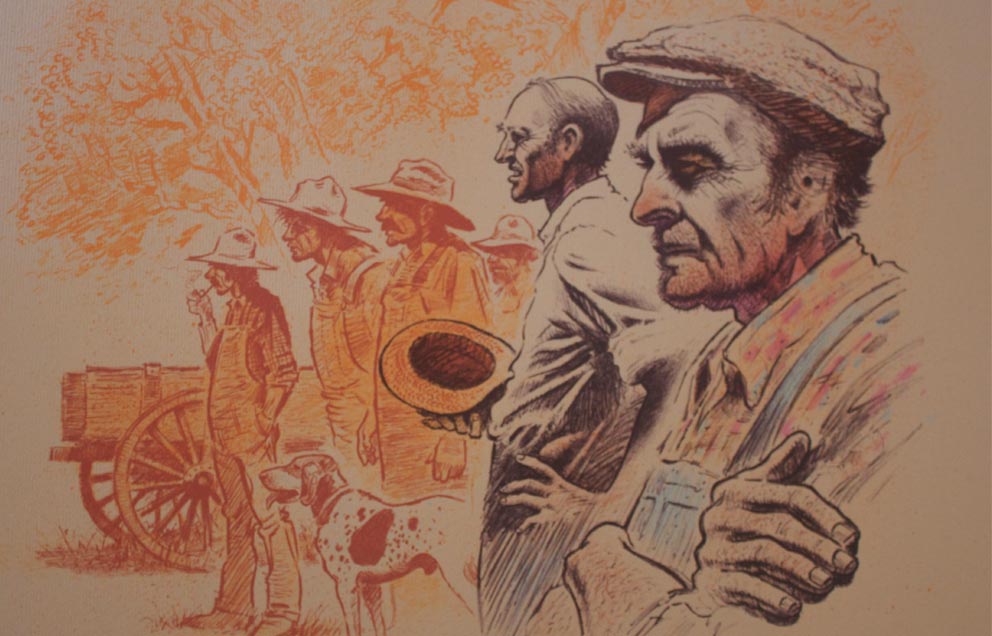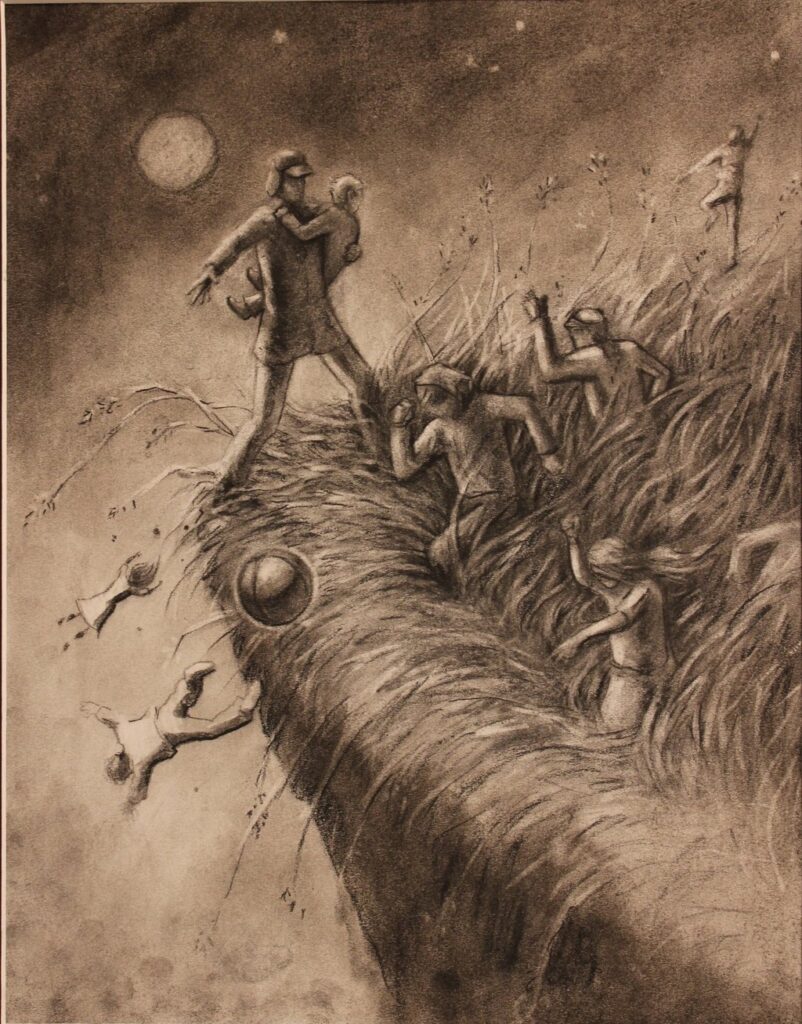Cimarron
Edna Ferber
1930
(The Oklahoma land rush of 1889 gives Yancey Cravat an opportunity to rescue his wife from civilized mediocrity, and head west for the untamed life of the pioneer.)

Yancey Cravat is the Cimarron—the wild one, like an aimless river or a jousting bighorn sheep. He may tote legal volumes as easily as a gun, and be as quick with a Shakespeare quote as with a trigger; and yes, he’s a lawyer and the editor of a socially active newspaper… but this is no milktoast city boy. This is Buffalo-Head, the tall, gruff, steel-eyed pioneer for whom three years in the same place or a single day without some sort of risk or conflict is evidently his idea of hell. And, no doubt, the wife of such a one is bound to be some kind of woman: Sabra, a sharp, spirited, strong, self-sufficient saber of a woman. In fact, although most assessments of this book will tell you that its permanence lies in its presentation to the world of the unforgettable Yancey Cravat, who is it that ties the book together? Whom does the narrative follow, when Yancey’s itchy traveling bone takes him to Alaska or the Spanish-American war? Not him, but the determined, toiling Sabra. Granted, she lacks the explosive flash of her husband–her way is much too pragmatic to put her in much danger or make her many enemies. But she is really the central character of the book, the one who grows, the one who succeeds in adapting herself to the various jolting cultural shifts that get thrown into her path by the errant Yancey, or by her son, or by the discovery of oil. At first entry into the fledgling land rush town of Osage, Oklahoma, fresh from the overprotection of her family the proper Venables of Wichita, she breaks into sobs when kissed by a stranger on the street. But give her eight or nine years, and she’s riding in the middle of the night into an Indian reservation during a mescal ceremony and demanding that her unconscious son be thrown onto her cart so she can bring him home. But of course, yes, we do want to hear about Yancey, despite… or maybe partly because of… his refusal to stick around. He’s idealistic, imposing, and indomitable. Take one particular tent meeting, for instance: in the course of giving a sermon, he manages to work in a self-defense killing—yes, the actual killing, not the story of a killing. And when warned that his pro-Indian editorials are going to get him killed, his reply is simply the unearthly death-scream of the Cherokee. (more…)
Go Down, Moses
William Faulkner
1942
(Vivid tales from the deeply rooted McCaslin family of Mississippi explore the human desire to dominate others.)

Faulkner raises a novel, especially Go Down, Moses, like a mountain range. A small peak here, another one some indefinite distance to the side but nearer to the viewer, another apparently between them but actually much further in the distance. The slopes are irregular in grade, no shape is symmetrical, no sequence predictable. The greatest of the mountains has flanking foothills—here at least is order and intelligibility! One is prepared for the most gigantic landforms. Actually all of them, though apparently haphazardly arranged, are obviously part of a single landscape, each part depending on those around it for its qualities and significance. The notion that each mountain be viewed as an isolated individual, despite distinctions of personality and structure, is ridiculous. One best realizes this, perhaps, by receding somewhat from the view. For when close to it, when stumbling over craggy outcrops and struggling to circumvent gorges, the scene seems hopelessly chaotic and fragmented. Such is Go Down, Moses, a challenging and awesome range of tales.
The Catcher in the Rye
J. D. Salinger
1951
(He may not know what he wants to be in life, but he sure knows one thing he doesn’t want to be—phony! Unfortunately, the world doesn’t seem to agree with him).

Holden Caulfield is a unique and precious personality in literature. Although I surely would not want to be subjected in all my reading to the starkness of The Catcher in the Rye, the book is curiously invigorating and liberating. Despite what one might call the main character’s cynicism, almost paradoxically the strongest draw of the novel for me is that he is refreshing. Holden is thoughtful, genuine, unsettled, and uninhibited, and these qualities allow the author to portray our secret thoughts and the culture of our time, in the evident hope that we can be enlightened by them.
The Right Stuff
Tom Wolfe
1979
(Seven pilots scale the ziggurat of manliness on the quest to be America’s space heroes.)

Tom Wolfe probably awoke one morning and thought to himself, wouldn’t it be great if reading about current events were as fun as reading novels? And with as simple an idea as that, he kicked off the movement known as New Journalism. And Wolfe sure is fun to read! (more…)



A Sand County Almanac
July 9, 2014 / 3 Comments on A Sand County Almanac
Aldo Leopold
1948
(An ecologist contemplates and celebrates the land, and recommends an expansion of our moral world.)
In today’s courses on ecology, forestry, conservation, environmental philosophy or land use, three personalities are routinely introduced as the fathers of modern concern for nature, the three who first and most strongly urged us to enlarge our conception of what in this world is a proper object of moral consideration: Henry David Thoreau, John Muir, and Aldo Leopold. Contemporary American (and to some extent world) culture has been impacted by A Sand County Almanac, as by Thoreau’s Walden, to such an extent that we cannot yet begin to assess it. Nevertheless, I would argue that we as a culture have still not attended to the two main lessons A Sand County Almanac would teach us.
(more…)